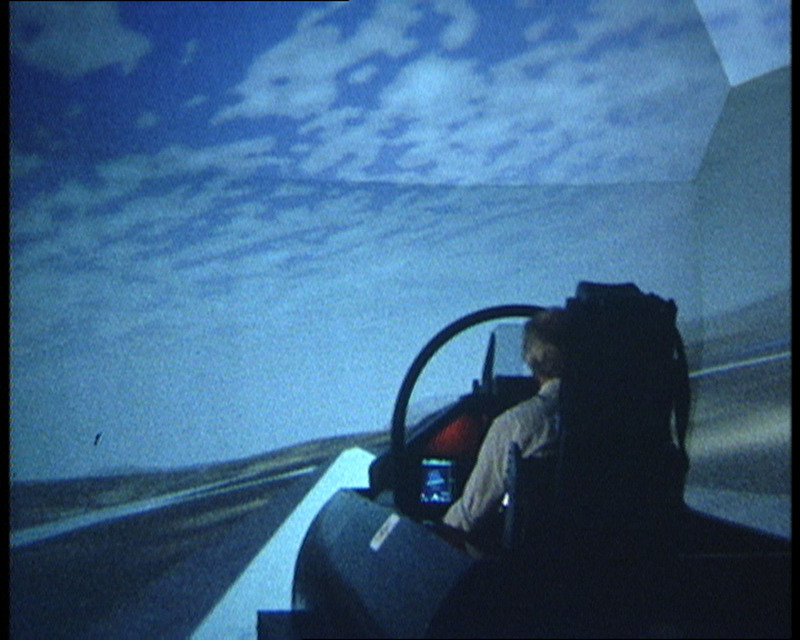Harun Farocki
Video Gallery
The work of avant-garde filmmaker and video artist Harun Farocki (1944–2014) examines the power of images and the politics of their use. Combining text, narration, and found and archival footage, Farocki’s films employ an experimental documentary format and essayistic style to engage such topics as imprisonment, surveillance, capitalism, and war. This presentation includes two of the artist’s most critically renowned works―Images of the World and the Inscription of War (1988) and Schnittstelle (Interface) (1995). Together they speak to the range of his practice and the scope of his investigations into the ways that images are used to inform, instruct, persuade, and propagandize. Both works are on view for the first time since entering the permanent collection in 2016.
Images of the World and the Inscription of War explores the “blind spots” in the interpretation of aerial photographs taken during an American bombing raid on an industrial plant in Germany in 1944. When the photos were reviewed by the CIA in the mid-1970s, analysts realized that the Auschwitz concentration camps were also captured in these images. The film underscores the sentiment that the truth is hardest to grasp when the evidence is right before your eyes. The way that an image is interpreted, Farocki argues, has everything to do with the context in which the image is placed at the time of interpretation.
With Schnittstelle (Interface) Farocki reflects on his own documentary practice. The film examines the question of what it means to work with existing images rather than producing one's own, new images. The German title plays on the meaning of Schnitt (to cut), referring both to Farocki's workplace, the editing table, as well as the "human-machine interface."
Screening times
Images of the World and the Inscription of War (73:30 min.): 11:10 am, 1 pm, 3 pm
Schnittstelle (23 min.): 12:30 pm, 2:30 pm, 4:30 pm
About the artist
Harun Farocki was born in German-annexed Czechoslovakia in 1944 and died in Berlin in 2014. From 1966 to 1968 he attended the Deutsche Film- und Fernsehakademie Berlin (DFFB). In addition to teaching posts in Berlin, Düsseldorf, Hamburg, Manila, Munich, and Stuttgart, he was a visiting professor at the University of California, Berkeley, from 1993 to 1996. Farocki made close to 120 films, including feature films, essay films, and documentaries. He wrote for numerous publications, and from 1974 to 1984 he was editor and author of the magazine Filmkritik (Munich). His work has been shown in many international exhibitions, including the 56th Venice Biennale (2015) and Documenta 12 (2007), as well as major solo exhibitions at the Tàpies Foundation, Barcelona (2016); Hamburger Bahnhof, Berlin (2014); Moderna Museet, Stockholm (2013); Tel Aviv Museum of Art (2013); Museum of Modern Art, New York (2011); and Tate Modern, London (2009).
Selected works

Harun Farocki
Schnittstelle (Interface)
1995